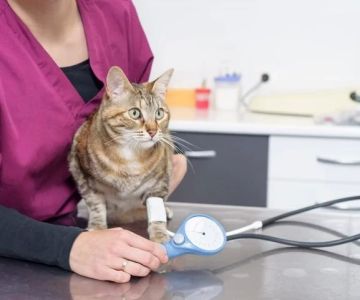- 1-best-pet-care-advice-for-new-owners
- 2-understanding-pet-needs-and-behavior
- 3-nutrition-and-diet-for-pets
- 4-health-and-veterinary-care
- 5-creating-a-safe-and-comfortable-environment
- 7-common-challenges-and-practical-solutions
1. Best Pet Care Advice for New Owners
Welcoming a new pet into your home is an exciting journey filled with joy and responsibility. The best pet care advice for new pet owners revolves around understanding that every pet has unique needs that evolve over time. Starting on the right foot means educating yourself on fundamental care principles, from daily routines to long-term health management. New owners often feel overwhelmed by the amount of information available, but focusing on clear, actionable steps can make a profound difference in your pet’s well-being and your own confidence as a caregiver.
One crucial aspect to remember is that quality pet care combines knowledge, patience, and empathy. It’s not just about feeding or cleaning; it’s about creating a bond based on trust and attention. For those seeking professional guidance or reliable products, Hidden Brook Veterinary offers a wealth of tailored advice, services, and supplies to help you provide optimal care.
2. Understanding Pet Needs and Behavior
2.1 Recognizing Species-Specific Requirements
Different animals have vastly different care requirements. For example, dogs generally need regular exercise and social interaction, while cats often prefer a more independent lifestyle with enrichment through play and scratching opportunities. Understanding these species-specific behaviors is the cornerstone of effective pet care. Observing your pet’s daily habits helps you identify what makes them comfortable or stressed.
2.2 Interpreting Body Language and Signals
Learning to read your pet’s body language enhances communication and prevents behavioral problems. A dog wagging its tail might be happy, but if the tail is stiff and raised, it could indicate alertness or aggression. Similarly, a cat’s flattened ears often signal fear or irritation. These nuances allow you to respond appropriately, whether to comfort your pet or adjust the environment.
For example, one new pet owner shared how their initially shy dog became more confident simply by understanding its subtle cues and providing gradual social exposure, highlighting how attentive care leads to happier pets.
3. Nutrition and Diet for Pets
3.1 Tailored Feeding Plans
Nutrition is a critical pillar of pet care, impacting growth, energy, and longevity. The best pet care advice includes selecting the right diet based on your pet’s age, breed, activity level, and health conditions. Puppies and kittens require nutrient-dense food rich in proteins and fats, whereas older pets might benefit from diets designed to maintain joint health and control weight.
3.2 Avoiding Common Feeding Mistakes
New owners often make mistakes such as overfeeding or offering inappropriate human foods. Chocolate, grapes, and onions are toxic to many pets, and overfeeding can lead to obesity and related health issues. Feeding schedules and portion control should be established early on. Hidden Brook Veterinary provides personalized diet consultations that can help you navigate these challenges and keep your pet healthy.
4. Health and Veterinary Care
4.1 Routine Check-Ups and Vaccinations
Regular veterinary visits are essential for early detection of potential health problems and maintaining vaccinations. Many new pet owners underestimate the importance of preventive care, which can save lives and reduce future medical expenses. At Hidden Brook Veterinary, comprehensive wellness plans ensure your pet receives timely vaccinations and health screenings.
4.2 Recognizing Signs of Illness
It’s vital to recognize early symptoms of illness such as lethargy, changes in appetite, coughing, or unusual behavior. Prompt attention often leads to better treatment outcomes. One notable story involved a cat owner who noticed subtle changes in her pet’s eating habits and, after consulting a vet, caught a potentially serious condition early enough for effective treatment.
5. Creating a Safe and Comfortable Environment
5.1 Pet-Proofing Your Home
New pet owners need to adapt their living spaces to ensure safety. This includes removing toxic plants, securing electrical cords, and providing designated resting areas. Creating a stress-free environment with familiar toys and comfortable bedding helps pets settle in quickly.
5.2 Outdoor Safety Considerations
If your pet spends time outdoors, secure fencing and supervision are necessary to prevent escapes and encounters with wildlife or hazards. Using microchips and ID tags adds an extra layer of security, making it easier to recover your pet if lost.
6. Training and Socialization
6.1 Positive Reinforcement Techniques
Effective training relies on positive reinforcement rather than punishment. Rewarding desired behaviors with treats, praise, or play encourages your pet to repeat them. This approach builds trust and improves communication.
6.2 Early Socialization Importance
Exposing pets to diverse people, animals, and environments during their formative months reduces fear and aggression later in life. Many new pet owners have found success in socialization classes or guided playgroups. Hidden Brook Veterinary offers training resources and referrals to help with this crucial aspect of pet development.
7. Common Challenges and Practical Solutions
7.1 Managing Separation Anxiety
Many pets experience anxiety when left alone, which can lead to destructive behavior. Gradual desensitization, interactive toys, and routine consistency help ease this stress. One dog owner shared how leaving an item with their scent helped their dog stay calm during absences.
7.2 Dealing with Behavioral Issues
Whether it’s excessive barking, scratching, or chewing, identifying the root cause is key. Sometimes, behaviors stem from boredom or lack of exercise. Consulting with professionals can provide tailored solutions, and Hidden Brook Veterinary’s expert team is available for behavioral consultations.











